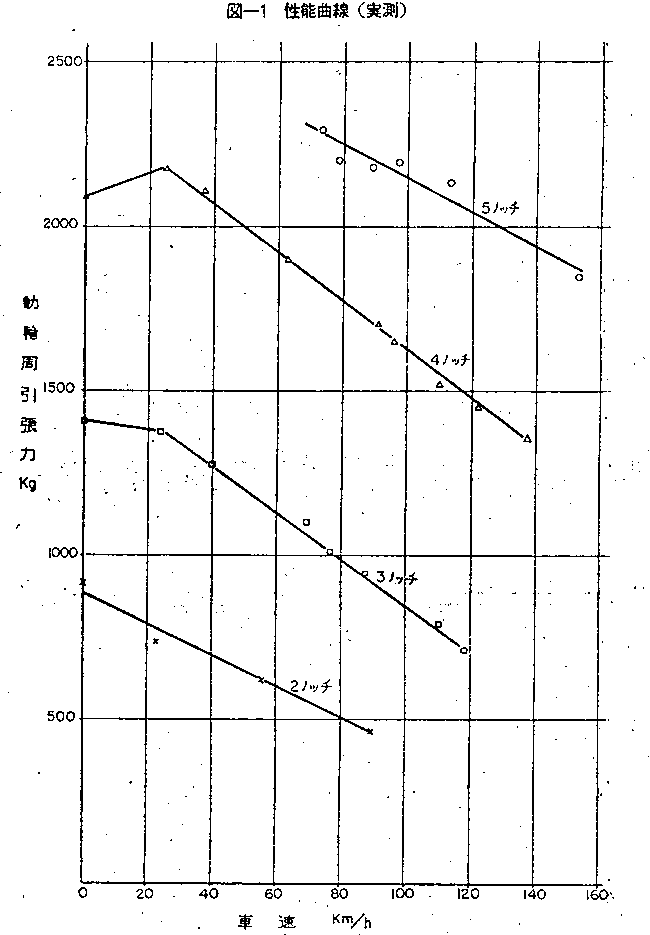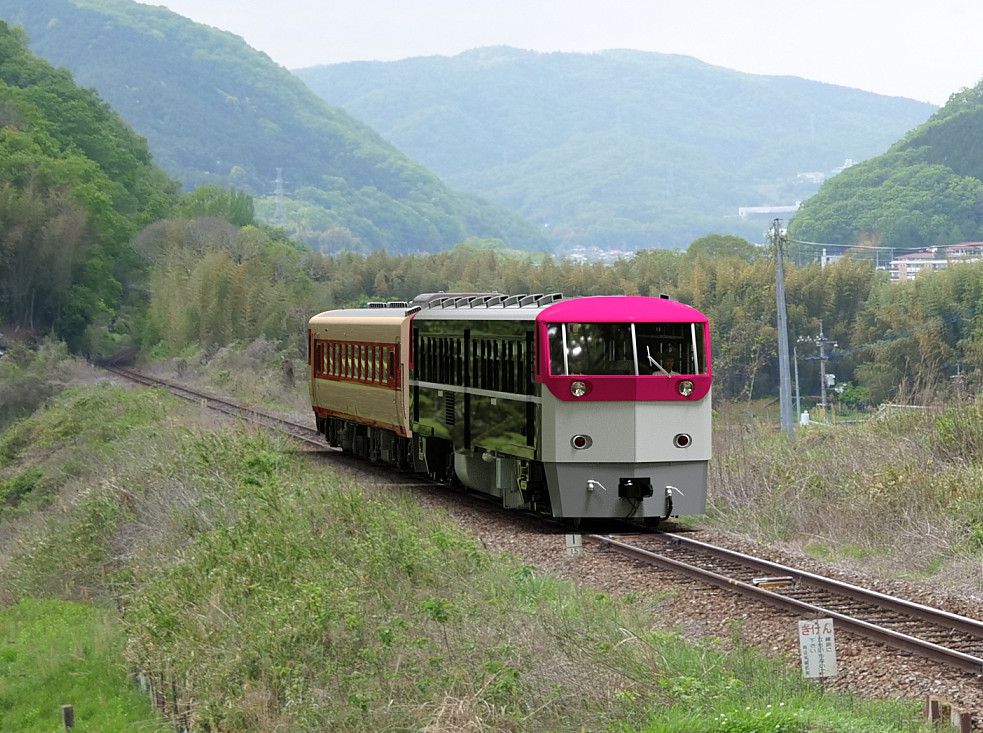|
|
Kiha 07 turbine powered prototype |
|
In 1966, basic researches to apply a
turbine to a railcar was began and in 1968, the gas turbine mounted kiha
07 was built. It was tested on Joban east line next year. This railcar
had a small engine under the floor with a large air supplying and
discharging device. At first glance, this railcar seemed to have a
capacity of 300 horse power but contrary to expectation, it had a
capacity of over 1000 horse power. What exciting underfloor power
source!
Next graph is the performance curve (speed -
tractive effort curve) of this railcar. Each plot was actually
measured value on test bench. It produced tractive effort of 1845kg at the speed of 153km/h and the output at the wheel rim exceeded 1000 horse power. As a reserve of acceleration is sufficient, it
might have exceeded a speed of 160 km/h and established a speed record
of railcars in Japan, still not have been broken. DMU exceeded a speed
of 150 km/h over 20 years later, Series kiha 183 established the
record of 153.5 km/h.
In the actual test run on Joban east line, the
maximum operating speed was limited to 85 km/h and kiha 07 prototype ran
slowly hauling one heavy DMU kiha 58 as a dead weight. So that the fuel
economy was very bad, consumed about twice the fuel of DMUs.
|

